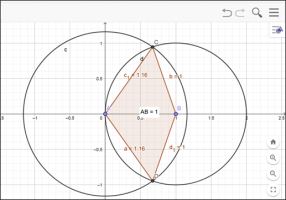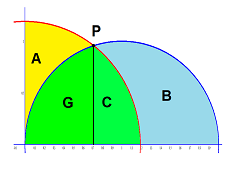
There are two circles like on the picture above. The smaller circles's radius is 1 and its
center point is 1 unit away from the bigger circle's center point. The intersection area of the two circles is equal to π/2.
The radius of the bigger circle is the question.
With the help of the computer I can find that the radius is 1.1587285.
I can write an equation but that is too complex to solve it without computer.
My father told me that somebody was able to calculate it without using computer approximately 40 years ago.
I would be grateful if anybody could help me.


